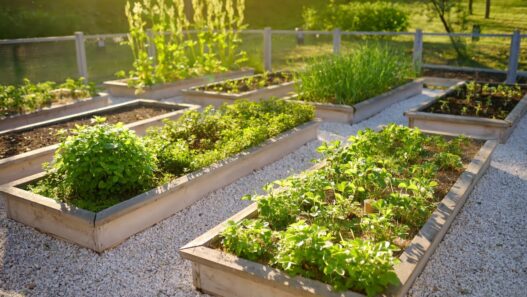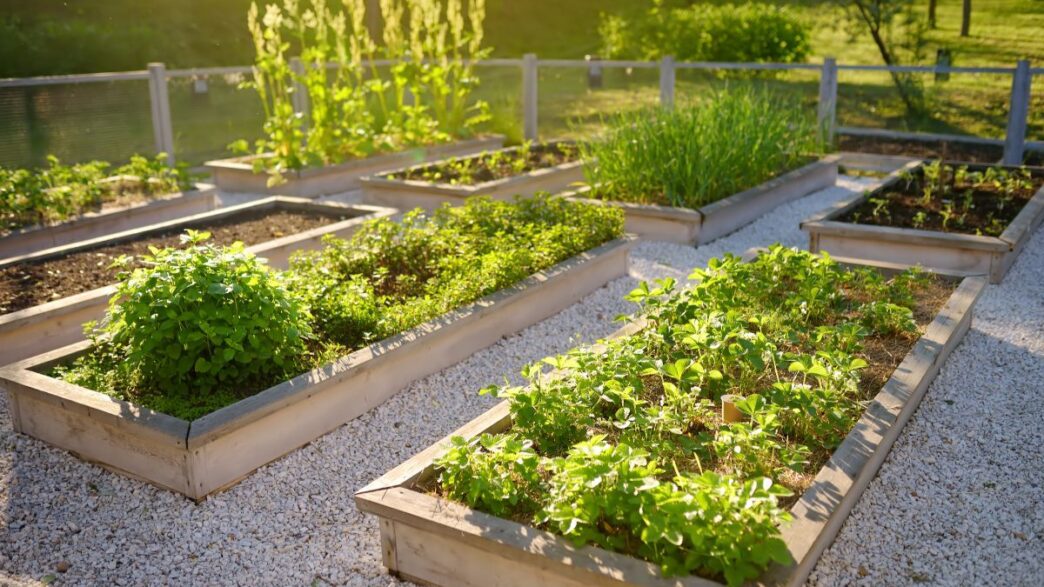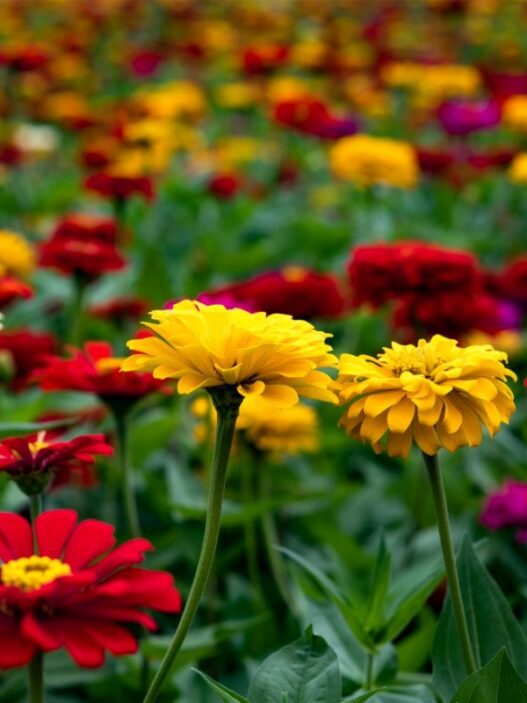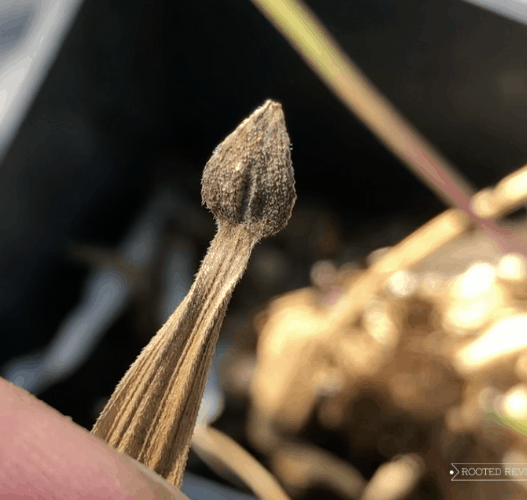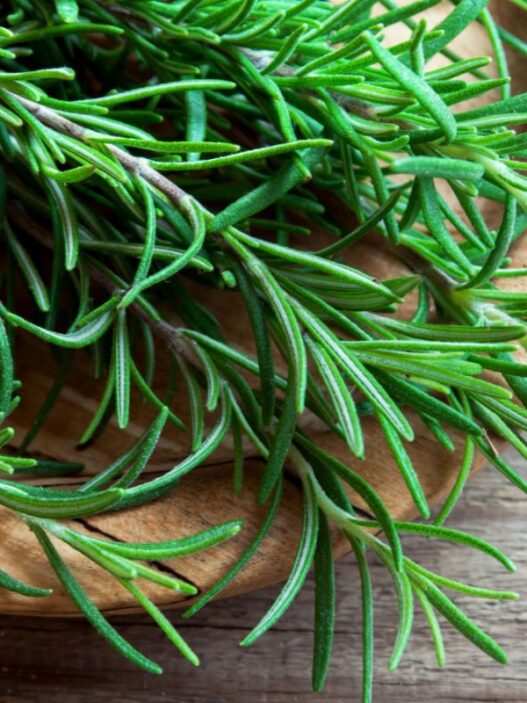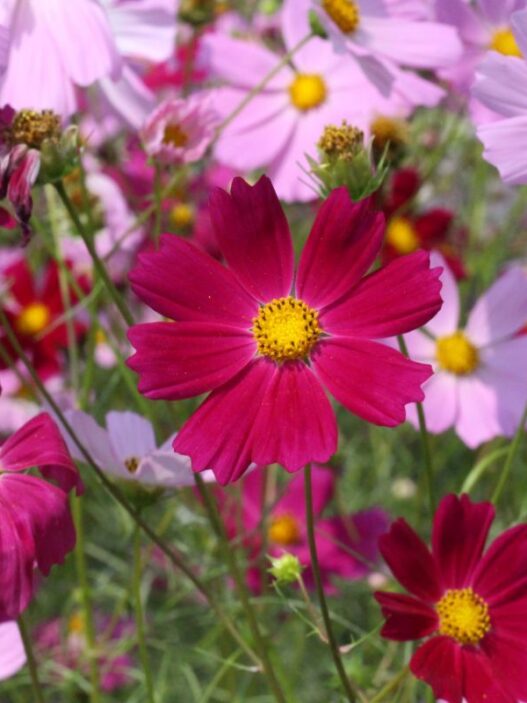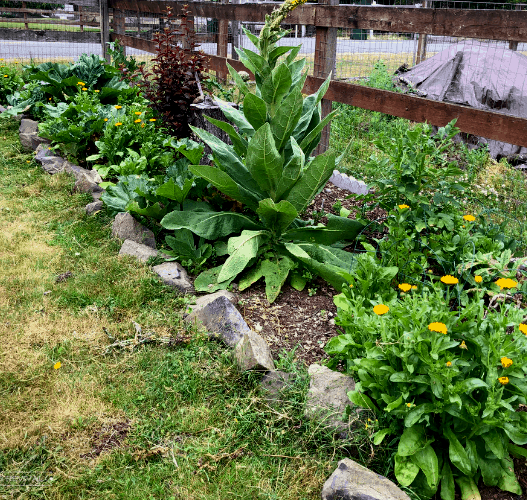Welcome to the murky realm of intercropping.
This is where gardeners strategically cultivate different fruits and vegetables together to enhance growth and deter pests. But here’s one – can you plant potatoes next to onions?
As a seasoned gardener, I can vouch for the success of planting potatoes next to onions. The onions act as a natural deterrent against certain pests that can otherwise bother potatoes to grow healthier.
And it gets better.
Potatoes can, in a way, join hands with onions, and create a beneficial shading effect. They keep the soil cool and help suppress weed growth.
For better results, I always pay close attention to spacing so both crops thrive harmoniously.
To shed light on this gardening mystery, let me take a look at:
- Can you plant potatoes next to onions
- How close to plant them
- What you shouldn’t plant next to potatoes

Is it possible to plant potatoes next to onions?
Right – let me spill the beans for you!
Some crops thrive alongside one another as good companions; others clash as bad neighbors.
The good news is that potatoes and onions are excellent companions, and planting them side-by-side brings no issues. These plants coexist harmoniously. They don’t interfere with each other’s:
- growth
- root zones
- or soil preferences
Phew!
Now, here’s the juicy bit: the root system of potatoes and onions operates at a different depth. Potatoes dig deeper into the soil.
On the other hand, onions prefer a shallower reach, almost near the surface.
This difference means their roots don’t compete for the same nutrients, which fosters friendly cohabitation.
Potatoes thrive in the pH range of 6.0 to 6.5, and onions are content with 6.0 to 6.8.
Slightly different you might say.
But this slight pH variation is inconsequential, as they’re close enough to coexist without fuss. It’s like they’re made to be grown together!
And that’s not all – there’s an extra perk to this partnership. Pairing onions with potatoes in your garden isn’t just about coexistence; it’s a smart strategy with multiple advantages.
When these two crops grow together, a natural form of pest control comes into play. Onions possess the remarkable ability to repel aphids and whiteflies, which can be troublesome pests for potatoes.
The cherry on top of the cake my friends!
Potatoes provide shading, which maintains the soil’s temperature and prevents weed growth for both crops.
So, as you plan your garden, I assure you that onions and potatoes can happily share the same bed. They’re quite the dynamic duo.
How close to potatoes can you plant onions?
Now, let’s dive into the nitty-gritty of spacing.
This is pretty crucial for the harmonious coexistence of potatoes and onions in your garden.
With the right spacing, you really are setting the stage for a thriving partnership.
For potatoes, I recommend a gap between rows typically falls between 24 to 36 inches (60 cm to 90 cm). But here’s the trick: you won’t need that much room between your row of potatoes and the neighboring row of onions.
Why? Because onion tops have a much smaller leaf spread compared to potatoes. Usually, onion rows are spaced around 12 to 15 inches apart (30 cm to 38 cm).
Now, let’s do some gardening math to create the perfect arrangement. Imagine your mature potato plants spreading out 24 inches (60 cm).
This gives you about 12 inches (30 cm) of space on either side of the seed tuber planted at the row’s center. Easy.
On the other hand, onions are content with just 6 inches (15 cm) of room on each side of the onion set. Put those numbers together, and voilà – you’ve got 18 inches (46 cm).
So, here’s the golden rule: position your row of onions 18 inches (46 cm) away from the center of your row of potatoes.
If you follow my advice, both your potatoes and onions will have the elbow room they need to thrive and flourish without stepping on each other’s gardening toes. It’s all about calculated coordination that leads to a beautiful, well-spaced garden.
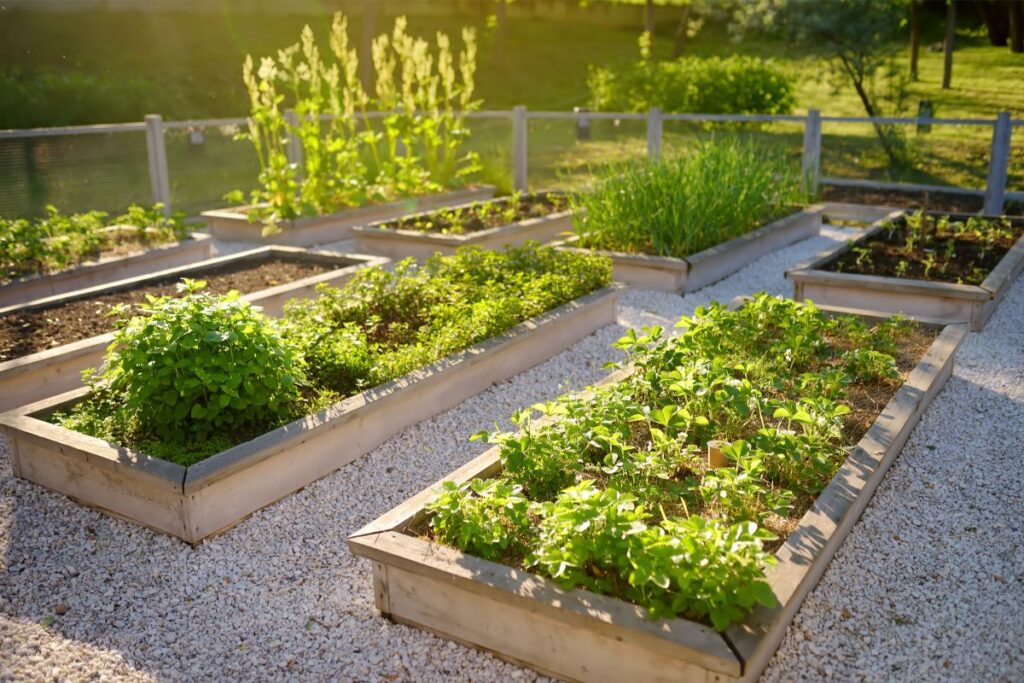
What can you not plant next to potatoes?
You’re potatoes need buddies!
But there are a few crops you might want to keep at arm’s length. This is mainly due to any potential negative interactions.
Here are a few example for you:
1. Tomatoes
Let’s dive deeper into why potatoes and tomatoes might not be the best BFFs in the garden.
Planting potatoes next to tomatoes actually presents challenges due to shared susceptibility to certain diseases. An example of this is the dreaded ‘late blight.’
Late blight is a fungal disease.
It affects both potatoes and tomatoes and causes significant damage to their foliage and potentially ruining entire crops.
The disease can spread rapidly under the right conditions, particularly:
- warm environments
- humid environments.
2. Cucumbers
Both potatoes and cucumbers are heavy feeders, meaning they require substantial nutrients from the soil to thrive, which affects the growth and yield of both crops.
Also, cucumbers have a tendency to attract certain pests that can be detrimental to the well-being of potatoes. This pest-attracting characteristic of cucumbers can inadvertently create an environment that invites trouble for potatoes.
3. Sunflowers
Imagine sunflowers in your garden as that one friend who’s super tall and just loves hogging the spotlight.
These tall plants have a tendency to create substantial shade around them as they reach for the sun. When grown close to potatoes, sunflowers can cast shadows over the potato plants and the surrounding area, which limits the amount of sunlight that reaches the potato foliage.
So, it is always a good idea to plant the two of them far, far away from each other.
What can you not plant next to onions?
Just like some people don’t get along, there are certain plants that you should avoid neighboring with onions due to specific factors.
1. Beans
Onions and beans are each other’s biggest foes and possess distinct nutrient requirements due to their varying growth habits.
Beans are renowned for their ability to fix nitrogen in the soil, enriching it with this essential element. While this is beneficial for overall soil health, it can pose a challenge when planted alongside onions.
If you’re wondering why, the excessive nitrogen in the soil can disrupt the delicate nutrient balance that onions require for bulb development. Therefore, I always try to put a lot of distance between the two.
2. Strawberries
Strawberries are characterized by their tendency to spread and form runners, which enables them to cover significant ground.
This overcrowding poses a great challenge for onions and can encroach upon their designated space, which results in a thirst for much-needed sunlight and other resources. So that is a big NO NO!
3. Garlic
Here’s the family drama – garlic and onions, the close cousins who can’t help but be a bit competitive.
While they share a botanical kinship, the relationship between garlic and onions can still lead to competition when they’re planted too closely together.
These two crops have similar growth patterns and requirements, which means that they will always compete for the same resources and make a mess for each other.
How long do potatoes take to grow?
Alright, let’s talk potatoes – those underground treasures that take a bit of time to work their magic.
Usually, I have seen that the growth process of potatoes is gradual, and it takes about 2 to 4 months for them to reach maturity after planting.
After planting seed potatoes in the soil, they need time to establish roots, develop stems, and produce foliage. As the plants grow, they allocate energy towards tuber formation, which occurs beneath the soil surface.
But here’s a revealing fact! The specific timeline can differ based on whether you’re growing early, mid-season, or late-season potato varieties.
To top it up, factors like temperature and moisture levels play a significant role in determining how quickly potatoes develop. Early varieties might be ready for harvest in around 2 to 3 months, while main crop varieties typically take 3 to 4 months to mature.
It’s a bit like eagerly awaiting the arrival of your favorite book’s next installment – you know the wait will be worth it, but you simply cannot wait to read it.
How long do onions take to grow?
Ah, onions! Those tear-inducing layers take a bit of time to unfold their full potential.
Usually, it takes 90 to 120 days on average for onions to mature and be ready for harvest. This period encompasses the stages of germination, vegetative growth, and bulb development.
But things can get tricky, and this duration differs based on the onion variety you’re planting and the environmental conditions of your region.
Let me explain! Onion growth begins with the planting of onion sets (small bulbs) or seeds. Afterward, onions typically undergo a period of germination where they establish root systems and develop green shoots above the soil.
The vegetative growth phase follows, during which the plants develop their foliage and accumulate energy for bulb formation.
The final phase is the bulb development stage, where the onion’s bulb expands and reaches its mature size.
Wrapping Up!
The big question is, can you plant potatoes next to onions? Well, the answer is a gardening high-five! These two are like the ultimate dynamic duo – each bringing their A-game to the gardening party.
So go ahead, embark on this journey, and reflect on the beauty of strategic companion planting with your two favorite veggies; potatoes and onions.
